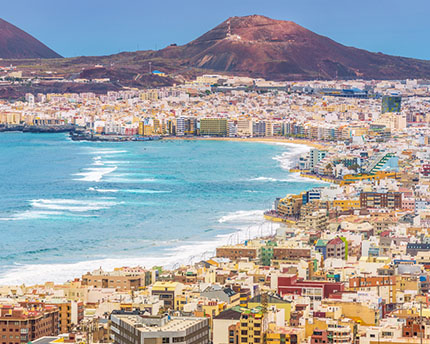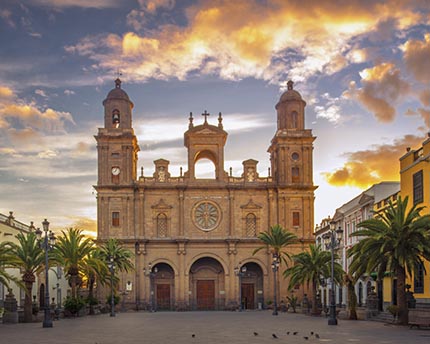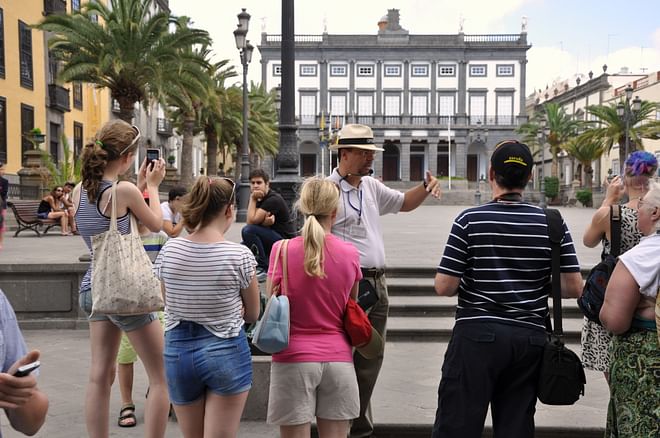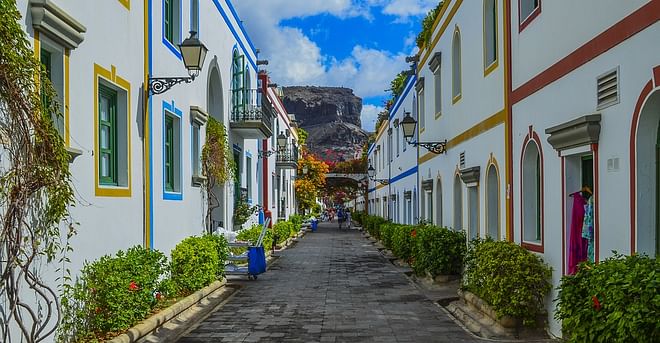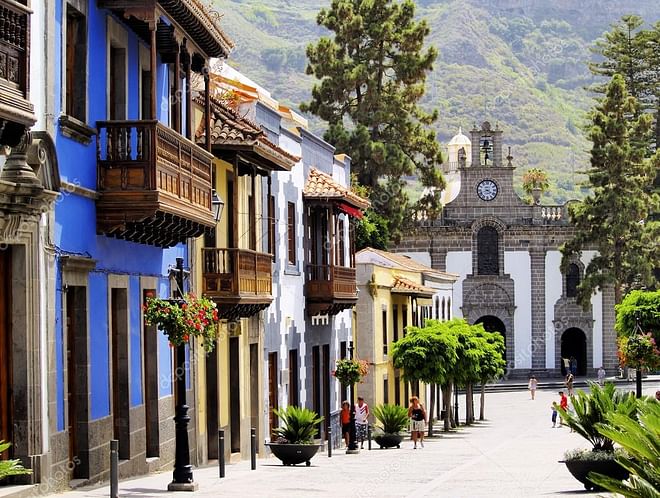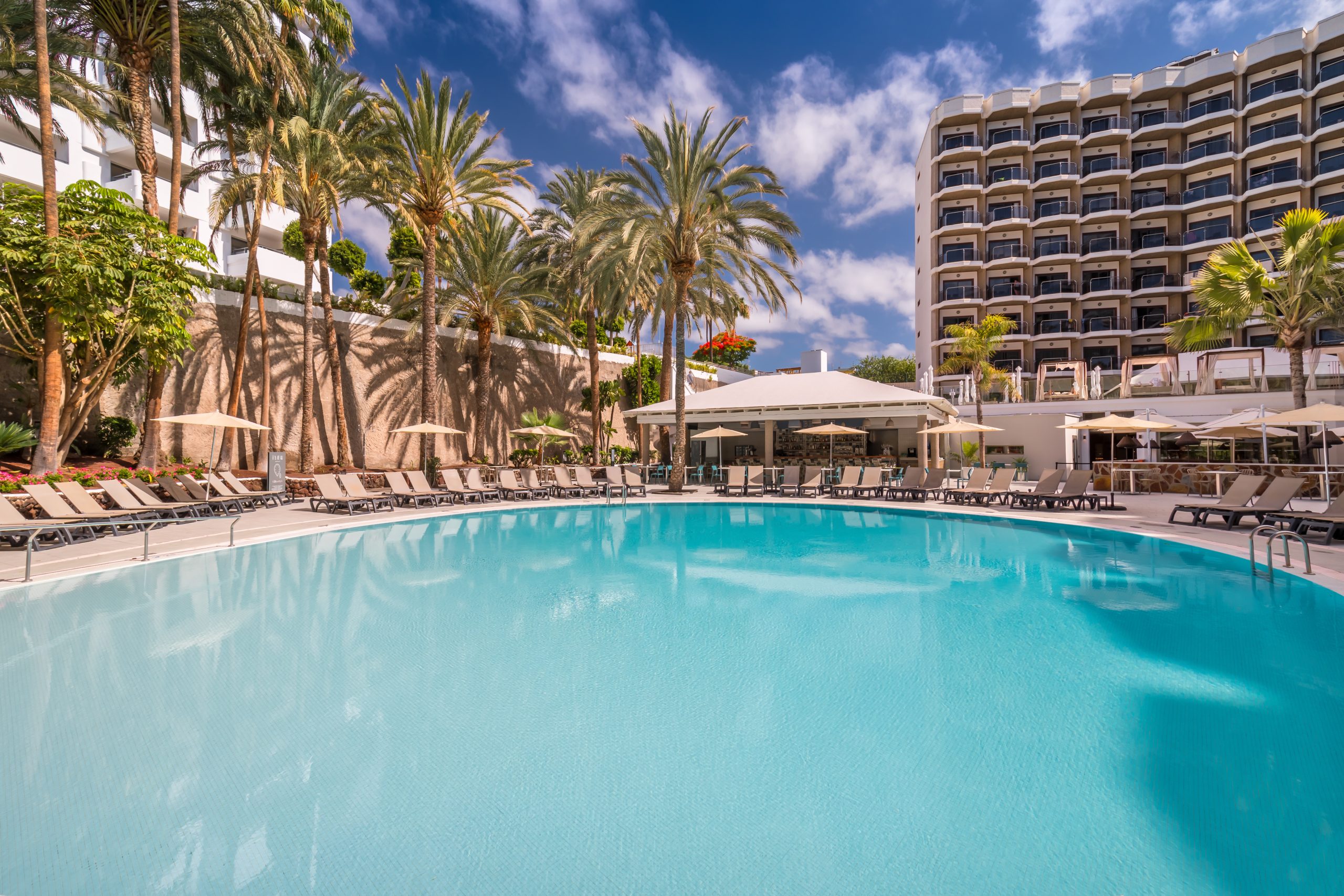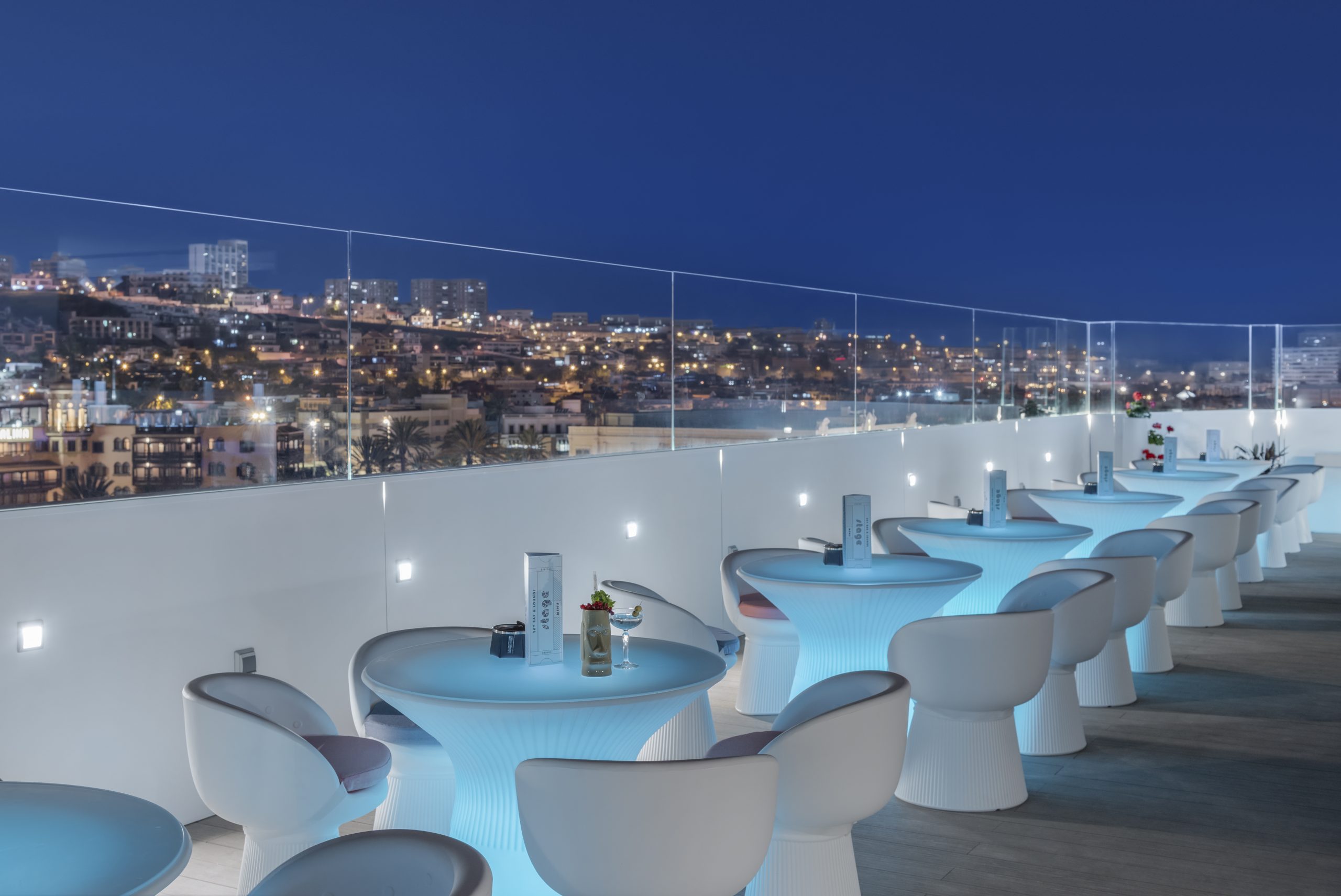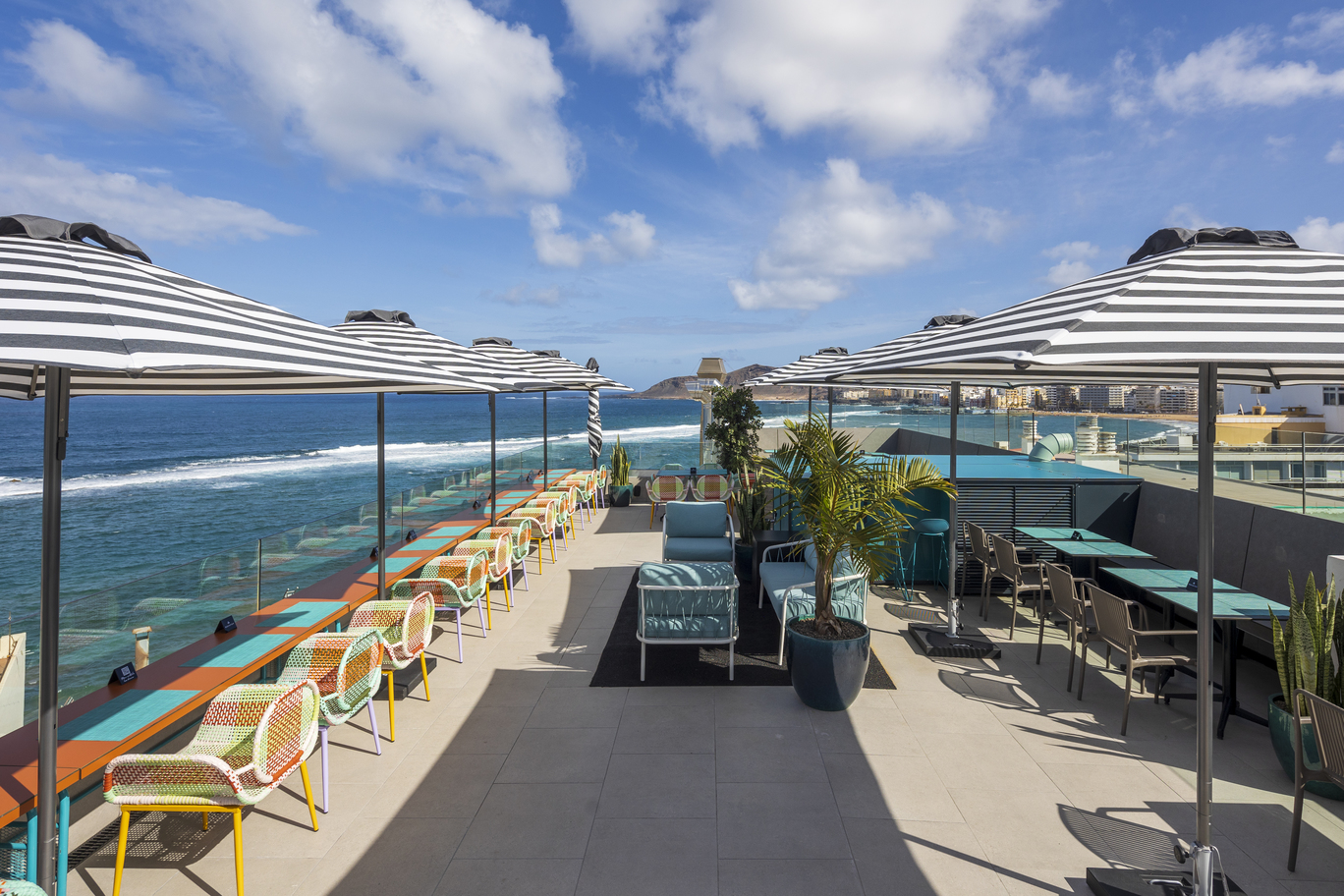Legend has it that the soaring twin towers of Las Palmas Cathedral replaced the only three enormous palm trees that were spared when the conquistador Juan Rejón set up a military camp in 1478. Most of the palm trees were cut down in order to clear the view and spot advancing Canarian warriors. The wood was then used to build defensive palisades, while the last three standing palm trees were used as a rudimentary lighthouse to guide ships arriving to the coast. This site would later become the city of Las Palmas.
Years later, in 1485, Las Palmas Cathedral, also known as the Cathedral of Saint Anne, was built at the exact same location. The palm trees were replaced by towers to guide vessels, but history had a few more turbulent events in store for the cathedral. Even though it was consecrated in 1871, it still hadn’t been completed. It would take almost 500 years for the cathedral to become the emblematic landmark we know today. Before diving into the misfortunes and challenged that plagued the cathedral, let’s first explore the architectural elements that make this building, located in old quarter of Vegueta, so unique.
The architectural style of Las Palmas Cathedral
The construction of the Cathedral spanned so many centuries it is not surprising to see various architectural styles. The cathedral occupies an impressive 7,000 m2 and was designed in the Late Gothic architectural style. The interior is decorated with Plateresque elements, inspired from the first Renaissance. There are three naves from which rise 10 columns and 22 pillars, supporting the star- and palm-like foliaged vaults. This is an ode to the indigenous flora, designed by one of the first architects to be commissioned for the project, Diego Alonso de Montaude.
The external façade of the building, however, is completely neo-classical. The only Gothic influence can be spotted in the six buttresses that join the lateral naves to the central nave. The dazzling white-washed external walls are a characteristic trait of Canarian religious architecture. You will also see it at the old hermitage of San Antonio Abad. All the other elements: the main façade that looks over Plaza de Santa Ana, the 19th century towers, the façade that looks out on Plaza del Pilar Nuevo were all designed by the architect Diego N. Eduardo in the neo-classical style reminiscent of the turn of the 19th century.
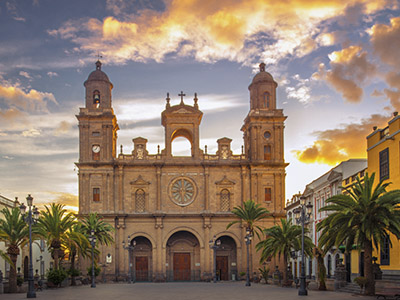
To the left of the church, when looking at the main façade, there is a plot that is in the plans for the completion of the cathedral. However, it has become a point of contention because there seems to be no consensus on how it should be completed. Should the original plan be respected or should it be altered and reflect current needs, such as creating a park or a square? In any case, construction was halted when archaeological remains of the city were discovered.
The majestic interior beauty of Las Palmas Cathedral
The interior of Las Palmas Cathedral is absolutely stunning. The combination of the Gothic design and the radiant luminosity, highlighted by the whiteness of the walls differs drastically with the Gothic style of mainland buildings that are so much more sober.
This wondrous luminosity is an architectural marvel considering the main façade is fitted with small windows and a rose window, and not the classical Gothic stained-glass windows. The elegant vaulting ribs, which spring from the columns and pillars to mimic palm trees and form star shapes, are without a doubt one of the most striking interior features.
If you enter the cathedral from the front entrance, you will find a chapel dedicated to the Virgin Mary to your right. The image dates back to 1696. In the same chapel, a large-scale fresco of Saint Christopher was discovered some years ago. It appears the image had been purposely covered over on suspicion of having some sort of mystical significance. It may have been true since the image is linked to alchemist initiation rituals. The church design does seem to have pagan influences.
In any event, the cathedral does not house any great artistic treasures since it was repeatedly attacked and ransacked by pirates who terrorised the Canary Islands. The most devastating attack took place on 30 June 1599 at the hands of the Dutch pirate Van der Does. The only pieces which survived the test of time are the 18th century wooden carved pulpit in the main nave, designed by Jerónimo de San Guillermo, and the Gothic altarpiece in the main chapel that is actually from the Seo de Urgell Cathedral (Lleida). In Los Dolores Chapel, you can admire the sculpture of the Virgin Mary made entirely out of cedar wood. This masterpiece was created by the renowned Canarian sculptor Luján Pérez.
The Cathedral also houses the Diocesan Museum of Sacred Art and its extensive collection of sacred paintings, objects and sculptures, including an incredible sculpture of Christ by Luján Pérez. The museum also has an impressive music archive from the 16th and 18th century that was miraculously saved from the pirates merciless looting. The museum may be a place of tranquillity and peace today but it housed the Inquisition Tribunal between 1507 and 1820.
It’s hard to envision the sinister past of the Museum’s beautiful courtyard, Patio de los Naranjos, fitted with a handsome cloister of Canarian architecture style. This is where more than 2,000 Canarias stood trial before the Spanish Inquisition between the 16th and 19th centuries. The Canarian historian Agustín Millares Torres played a key role in ensuring this part of history was not lost; he purchased the archives from the cart driver who had been commissioned to destroy the Spanish Inquisition’s archive at sea.
The unclear origins of Las Palmas Cathedral
Like any great masterpiece, Las Palmas Cathedral is shrouded in a cloud of mystery, starting with the saint it is dedicated to, Saint Anne. The first church of Saint Anne was built in Jerusalem by the Christian Crusaders in the 12th century. The cult of Saint Anne has been the subject of controversy – the Catholic Church refused to venerate her because of her association with the New Testament Apocrypha.
Perhaps the roots of this cult are behind the ‘different’ orientation of Las Palmas Cathedral. Most Christian basilicas were built facing the east, towards Jerusalem, but Las Palmas wasn’t. In fact, it faces the northeast. Recent studies have revealed that Las Palmas’ orientation aligns perfectly with the sun on the summer solstice/Saint John’s Day. This also happens to be when the founding of Las Palmas is commemorated. When the sun rises on the day of the summer solstice, the sun aligns perfectly with the large central bay of the cathedral’s main façade, giving way to the hypothesis of the secret, pre-Hispanic cult influence and the furtive rituals venerating Saint Anne.





































































